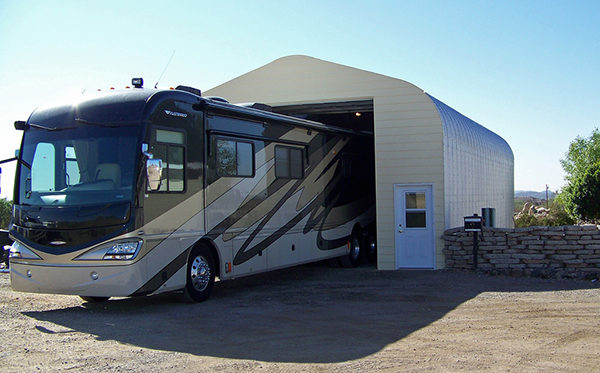When people start thinking about RV winter storage or they hear the word “winterizing,” they immediately think about preparing their RV water system for cold weather. While that is a very important step in getting your RV ready for winter, there are some items that should be on your pre-storage checklist. Take care of the whole package. That includes your RV interior, chassis and exterior. Yes, that means the tires, too!
The following are some steps often overlooked by RV owners. Start taking care of these tasks just as the temperature begins to dip and you’ll be ready to put your RV away come winter. Whatever you do, don’t wait until it gets really cold to begin, especially when it comes to winterizing your water system. You don’t want to risk frozen, bursting pipes!
Plumbing
- Protect your pipes and water system from freezing. This is one of the most important steps to implement early to avoid bursting pipes and other costly problems. Many people have their RVs serviced for this step, but if you’re interested in doing it yourself, you can consult our step-by-step instructions by clicking here.
Appliances
 Remove all food from your RV, even things stored in plastic containers. Mice, rats and squirrels can gnaw through plastic easily. Even if you keep your rig completely clean of food, they may come in with their own to nest in a warm place for winter. It’s always a good idea to check for openings that critters can use to get into your RV.
Remove all food from your RV, even things stored in plastic containers. Mice, rats and squirrels can gnaw through plastic easily. Even if you keep your rig completely clean of food, they may come in with their own to nest in a warm place for winter. It’s always a good idea to check for openings that critters can use to get into your RV.- Defrost your freezer and make sure to dry both the freezer and refrigerator compartments completely. Leaving the doors open overnight should do the trick. Also place baking soda in your refrigerator and freezer compartments before closing the doors to help absorb odors.
- Remove all dry cell batteries from appliances and alarms. Turn off gas appliances and turn the gas valve off. Cover LP gas appliances’ vents so insects will not nest in there.
Maintenance
- Turn off the main breaker since the vehicle will not be hooked up to electricity. Remove and store your RV batteries or else they will freeze and become damaged.
- Also, change the oil and oil filter on the engine and generator before storing your RV. Fill the fuel tank and add a fuel stabilizer. Run the engine and generator to get the stabilizer through the entire system.
- Make sure the fluid your windshield washer is drained or has an antifreeze solution to prevent freezing.
Interior
- Leave doors, drawers and cabinets inside open.
- Close the windows and blinds to prevent sun exposure to interior upholstery, paint, carpeting and floors.
Exterior
 Thoroughly clean the exterior of your RV prior to storage, using a quality wax. Clean your awning and let it dry before you store it. While cleaning, inspect the roof and body for any cracks that may allow water or pests in. If you have vent covers that protect against rain, leave the vents open slightly so there will be some ventilation.
Thoroughly clean the exterior of your RV prior to storage, using a quality wax. Clean your awning and let it dry before you store it. While cleaning, inspect the roof and body for any cracks that may allow water or pests in. If you have vent covers that protect against rain, leave the vents open slightly so there will be some ventilation.- If you’re storing outdoors, inflate tires to the manufacturer’s specifications and cover the tires with a cover that will block out the sun. Park the tires on top of a piece of plywood so the cold ground doesn’t damage the tires. Make sure that no area of the tire is hanging over the wood block. Try to move the rig every once in a while so the tires don’t develop a flat spot.
- If you aren’t storing your RV in a covered lot, buy a cover for your rig.
RV Insurance During Storage
Remember that protecting your RV is very important and that includes having the right RV Insurance. Are you worried about theft, storm damage, fire and vandalism while your RV is in storage? Having the right coverage can ease your mind. Many insurers offer coverage you can suspend when your vehicle is in storage while still protecting it in the event of a loss. Speak to an Insurance Specialist about your specific needs by calling (866) 501-7335 or begin your quote by clicking here.
The information in this article is obtained from various sources. This content is offered for educational purposes only and does not represent contractual agreements. The definitions, terms and coverage in a given policy may be different than those suggested here. Such policy will be governed by the language contained therein.
